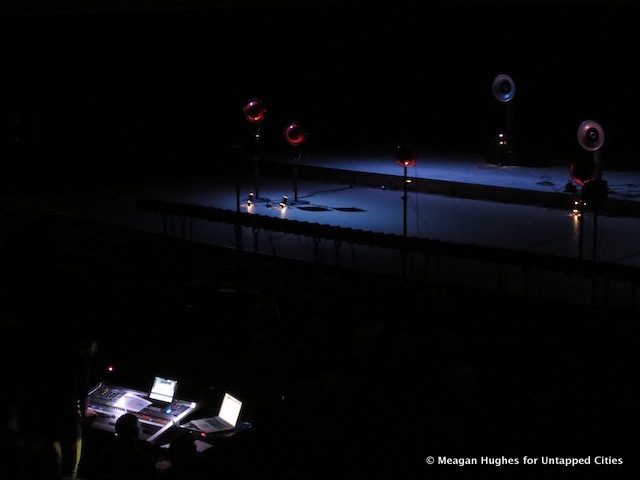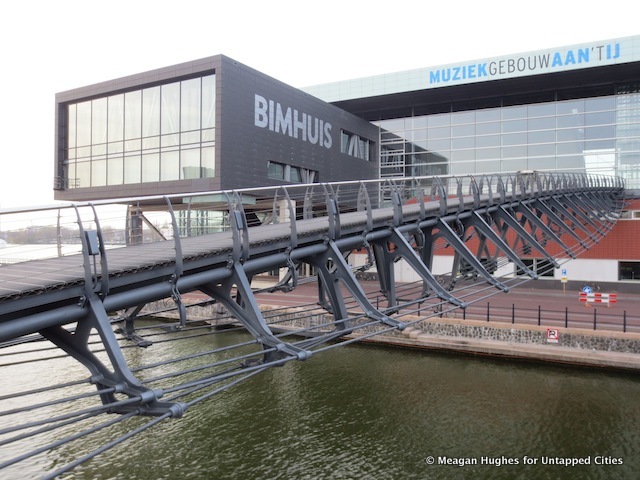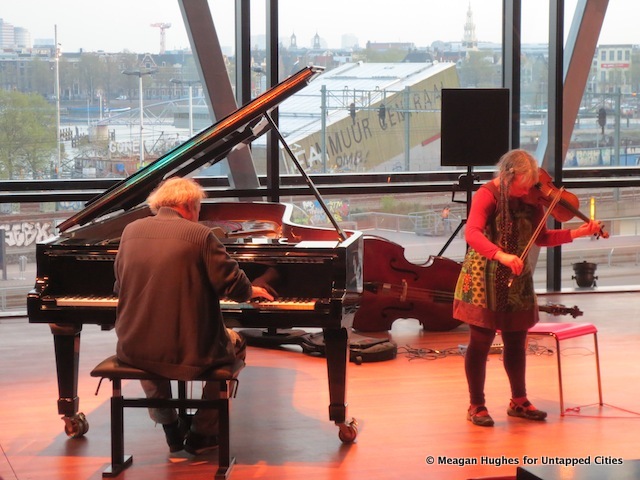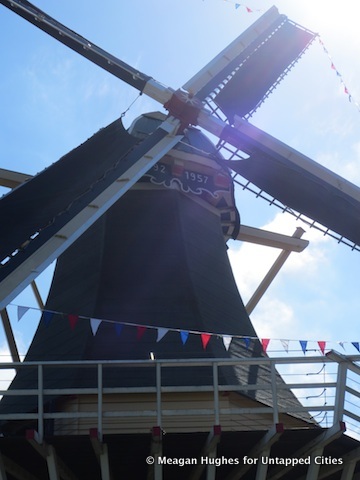While experimental performance is typically thought to evoke a niche audience, its presence is more ubiquitous than you may think. Believe it or not, the experimental music scene is alive and well across the western region of the Netherlands; otherwise known as Holland. Not to be overlooked as a trendsetter in how music interacts with and enhances public space, it is apparent that this inventive genre is increasing accessibility to the arts in practice and performance. Moreover, the Netherlands has a lot to offer through experimental music to someone living on modest means.

As I live in one of many university towns in the Netherlands, it’s hard to ignore the number of students that frequent the cafés, bars and performance venues around Holland. I believe that it is the students who bring much of the vibrancy to an urban arts scene, whether they are creating, performing or comprising brave audiences emboldening experimental artists. If you look to the conservatory of any city, such as the Koninklijk Conservatorium in Den Haag (The Hague), you will find opportunities to catch many creative and compelling performances; often times free to the public. One can take in an afternoon performance of the symphony on one day followed by an evening of electronic composition on another. In addition to numerous free events and concerts, the Institute of Sonology at KonCon hosted a free week-long symposium in April. The event offered not just exposure to cutting edge electro-acoustic composition, but the opportunity for audiences to take part in more interactive ways. With the theme of “Composing Spaces,” academic and public audiences alike explored the idea of “spatial representation” of music through lectures, workshops and performances.

In Amsterdam, there is plenty of investigation under way as to how performers and audiences can interact. Every Tuesday evening at the Bimhuis, there is an improvisation workshop which you can sit in on for free as an audience member or as a musician. The experience truly breaks down the walls between listener and performer; young and old. The music always transpires as an idea from a musician and then follows with an invitation for those to join that idea as an observer, performer and/or critic. The fluidity of interaction here also exists in that the musicians can re-create a performance based on the critique of the audience and choose to swap out musicians or musical concepts. Let it be said though that newcomers who wish to perform will be asked to first demonstrate a sample of their music as an introduction to their collaborators. After all is said and done, a free concert follows as well.

In addition to diffusing the barrier between audience and performer is the trend towards merging the experience of music and space. Jonathan Reus, Education, Community and Outreach liaison for STEIM (Studio for Electrico-Instrumental Music) in Amsterdam, is convinced of this “untapped” movement of music composed with and for public spaces. One such example he cites is the Echokamer series taking place in Mediamatic Fabriek’s industrial hall. This monthly experiment invites music and sound compositions that interact explicitly with the space. In May and June, Gonzo (circus), a publication on “new music and culture,” will undertake the curation for Echokamer #3 and #4. Reus makes a careful point to distinguish between this developing concept and the presence of “sound art,” which he says is already fairly prolific in its investigation of public space.

Speaking of public spaces, I can’t miss the opportunity to highlight the uniquely Dutch experience of having attended a performance inside of a giant windmill. De Houtzaagmolen De Ster (Sawmill Star) in Utrecht, originally constructed in the early 1700s, occasionally opens its doors for performances and special events. The particular evening that I was in attendance hosted an interdisciplinary performance by De Vorlesebühne, a collective of absurdist writers who perform short-prose; accompanied by the Genetic Choir, a purely improvisational vocal ensemble based in Amsterdam. Genetic Choir makes a point to perform in unlikely spaces and has performed such “instant compositions” to accompany a silent art film as well as for unsuspecting passengers in an elevator ascending the tallest building in Den Haag. The choir is a frequent collaborator in the experimental arts scene; having performed in a number of festivals and multidisciplinary arts spaces as well. One such space, Studio Loos in Den Haag, functions on many levels to serve artists and audiences as “a workspace, laboratory and public presentation place for research, experimentation, development, innovation and production of interdisciplinary electro acoustic music, sound art & audio art, improvisation and composition, monomedia, bimedia, polymedia and hypermedia.” Whew!
The commitment of experimental artists to their craft is demonstrated through the myriad ways they reach out to their audiences. Club Mediamatic offers a monthly membership with access to free exhibitions and discounts on other events. STEIM provides residency exchanges, internships and volunteer opportunities to those interested in learning more about their programs. Not to mention that all of the aforementioned performances are practically, if not entirely, free of charge. Whether through an intimate ensemble or a large institution, experimentation is where art making begins and how it evolves. By engaging the public in art more than as a mere consumer, experimental musicians in the Netherlands are at the crossroads of a transition from art as imitation of life to integration in life.





